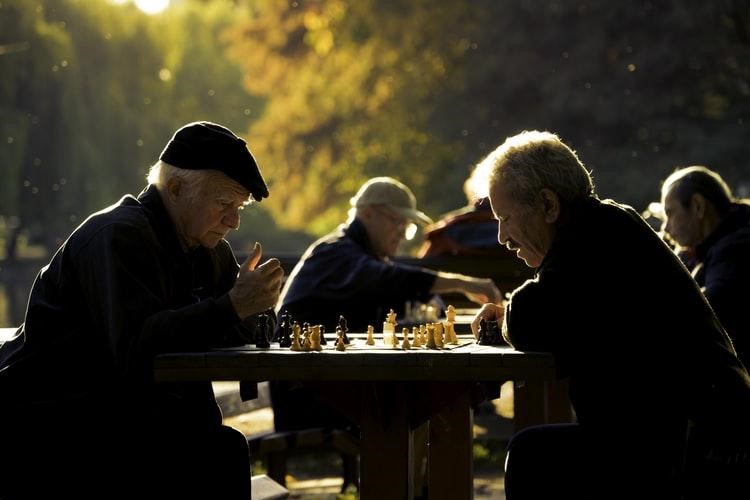
by Kent Probst

At its most basic meaning, functional strength training is resistance exercise that increases strength in your musculoskeletal system for the purpose of improving your activities of daily living.
While many of your activities of daily living are similar to millions of other people, some are not.
Each individual has some activities of daily living that create unique functional demands.
Your job may require you to climb a ladder, lift patients or transport luggage, or a multitude of other occupational requirements.
You may already be doing strength training at the gym or at home. Good for you. The benefits of strength training are many. But the exercises you’re doing may not be helping you functionally.
If you’re doing bicep curls, which is an isolation exercise, it’s probably not going to be as practical as doing a compound exercise (that uses more than one joint) such as rows.
According to the American Council on Exercise, for functional strength training to be successful it should mimic your functional activities and include the following:
- Coordination
- Types of muscle contractions (concentric, eccentric and isometric)
- Speed of movement
- Range of motion
So if you want to improve your occupational performance and get the benefits of functional strength training, incorporate strength training exercises into your workout that will directly transfer to your needs.
Benefits of functional strength training
-
Reduced risk of injury
If you’re performing the right functional strength training exercises, your functional activities of daily living should get easier.
For example, when your functional activities of daily living get easier, you’re also reducing the risk of injury, such as falling, by improving balance.
-
No need for expensive equipment
Functional strength training doesn’t require expensive equipment. Many of the exercises can be done against gravity, using dumbbells or body weight against gravity.
-
Improved strength and muscle mass
Functional strengthening exercises tend to be compound exercises, so they stimulate more growth hormone and testosterone than isolation exercises. Therefore, you’ll have better strength and muscle mass outcomes than with isolation exercises.
-
Better coordination
Since functional strengthening involves complex movement patterns, another benefit you’ll see is improved coordination. Since activities of daily living involve complex movement patterns, so should your functional strengthening.
-
Improved core stability
Improving your functional activities of daily living requires strengthening of the core, or the abdominal muscles and the paraspinal muscles of the lumbar region of the back.
Core strengthening is another benefit you’ll get from functional strength training. Any functional strength training should include exercises that engage and strengthen the core.
-
Postural improvement
Your posture should improve, as well, during functional strengthening. The back muscles from the rhomboids and middle trapezius to the paraspinal muscles of the low back will be strengthened if worked properly.
4 Functional Strength Training Exercises
Keeping in mind that everyone has different needs regarding functional activities of daily living, it’s impossible to recommend functional strength training exercises for everyone here.
The exercises profiled here are intended as a beginner’s guide for a general population, to get you started.
Lateral Lunge
Let’s say your functional needs involve stair climbing or leaning from side to side. You should perform a compound exercise that strengthens the quadriceps, hamstrings and glutes.
- Start with your feet apart, wider than shoulder width
- Bend the right knee and hip, going to the right side
- Push through your right leg and return to the start position
- Repeat on the left side
Medicine Ball Squat with Overhead Lift
This is a very practical exercise since it simulates an activity of daily living in which many people engage, such as picking up objects from the floor and lifting them overhead.
Medicine ball squat with overhead lift strengthens the quadriceps, glutes, low back and shoulders.
- Take a stance wider than shoulder width, holding a light medicine ball at waist level
- Squat down, bending your hips and knees and lower the ball close to the floor.
- Keep your back straight and head up
- Lift the ball overhead and then return to the start position
Half Kneeling Wood Chop
This is a very functional exercise that works the obliques, transverse abdominals, lats and shoulders. Even if you don’t need to chop wood, it strengthens the core, which is beneficial for other activities, such as swinging a bat or golf club.
- Start on one knee with the opposite knee bent 90 degrees in front, foot under the forward knee
- Hold a medium-to-light dumbbell or medicine ball near the knee that’s on the floor
- Lift the weight diagonally, to a height higher than your head, twisting your abdominal muscles
- The hips should remain stationary
- Bring the weight back down to the starting position
- Do a set of repetitions on one side, then switch to the other side
Dumbbell Row
The dumbbell row is not only a good general functional strengthening exercise, but it also strengthens the muscles of the upper back that you need for good posture. If your activities of daily living involve pulling, the dumbbell row is a good exercise for you.
- Your knees should be slightly bent while holding a pair of medium weight dumbbells
- Bend forward at your waist until your torso is about 45 degrees respective to the floor
- Start with your arms hanging down, elbows straight
- Pull the dumbbells up and back until you feel a full contraction of the back muscles, retracting the shoulders
- Lower the dumbbells slowly to the start position
Putting it All Together
Now that you know what functional strength training is and the benefits are, hopefully you’re ready to get started.
If you need to develop muscular endurance, 10 to 15 repetitions is a good range. To target strengthening, try 6 to 8 repetitions.
When performing strengthening exercises, remember to keep your abdominal muscles tight to maintain core stability and protect your back.
The exercises described here can get you started on your functional strength training workout, or can be incorporated into your current workout.
(Kent Probst is a blogger and the owner of Long Healthy Life Blog. Long Healthy Life Blog is dedicated to providing science-based solutions for health-conscious people who want to live longer, healthier lives. As a personal trainer, kinesiotherapist and bodybuilder, he has dedicated his life to optimal nutrition, fitness and natural remedies. He holds a bachelor’s degree in kinesiology and a master’s degree in exercise science.)





2 Trackbacks / Pingbacks
Comments are closed.